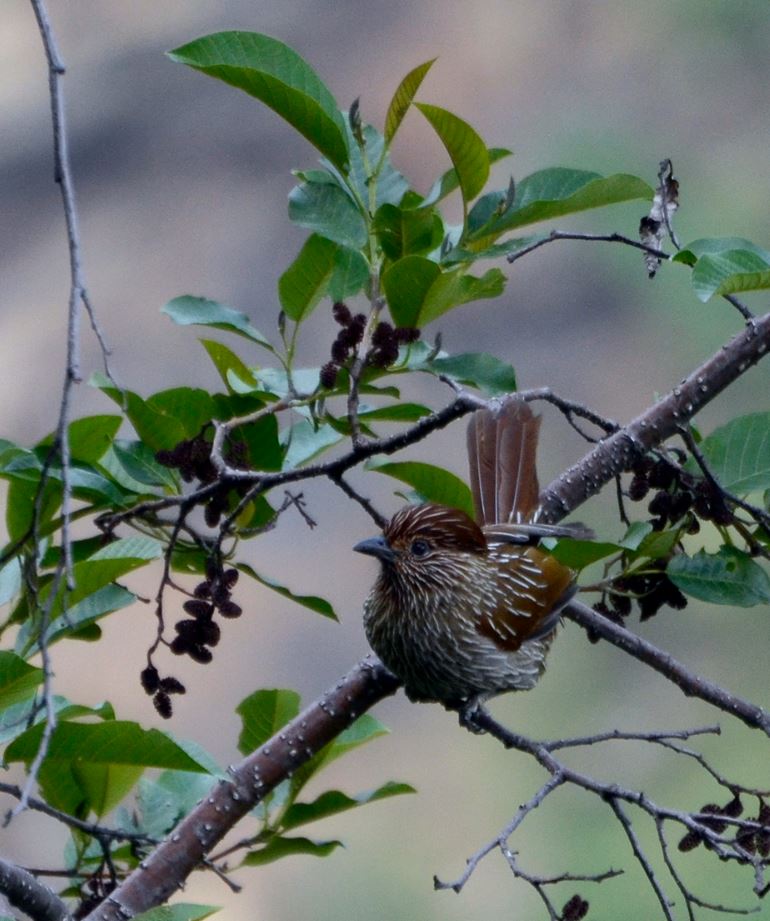Introducing the Striated-laughingthrush, whose feathers are primarily brown and do not have noticeable patterns. However, this bird has thin white lines that elegantly run across its body, making it a unique and fascinating sight to behold.
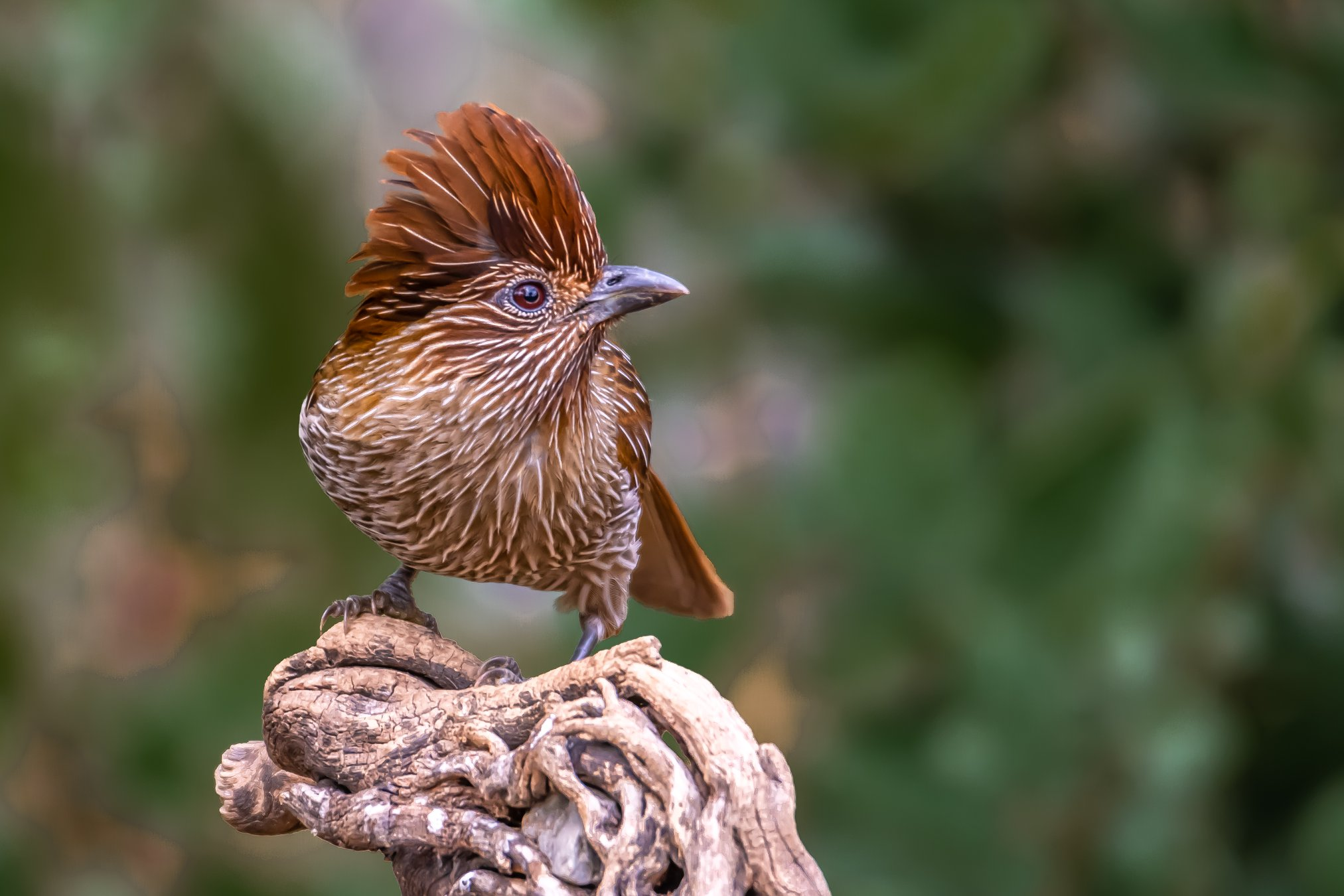
The striated laughingthrush, which belongs to the family Leiothrichidae and is a passerine bird, has a beautiful umber-brown upper plumage, sides of the head and neck, chin, and throat. The crest is the deepest shade of brown that gradually fades into a pale brown on the lower plumage. Each feather of this bird has a long median white streak, which is more prominent on the upper and lower parts, wing coverts, and tertiaries. However, the streaks are less distinct on the abdomen and under tail-coverts. The quills are dark brown, with the outer webs of the first few primaries appearing hoary and the others displaying a pale chestnut hue. The chestnut tail feathers have a small white tip. The bill is black, the legs are dusky plumbeous, and the reddish-brown iris was noted by Jerdon.
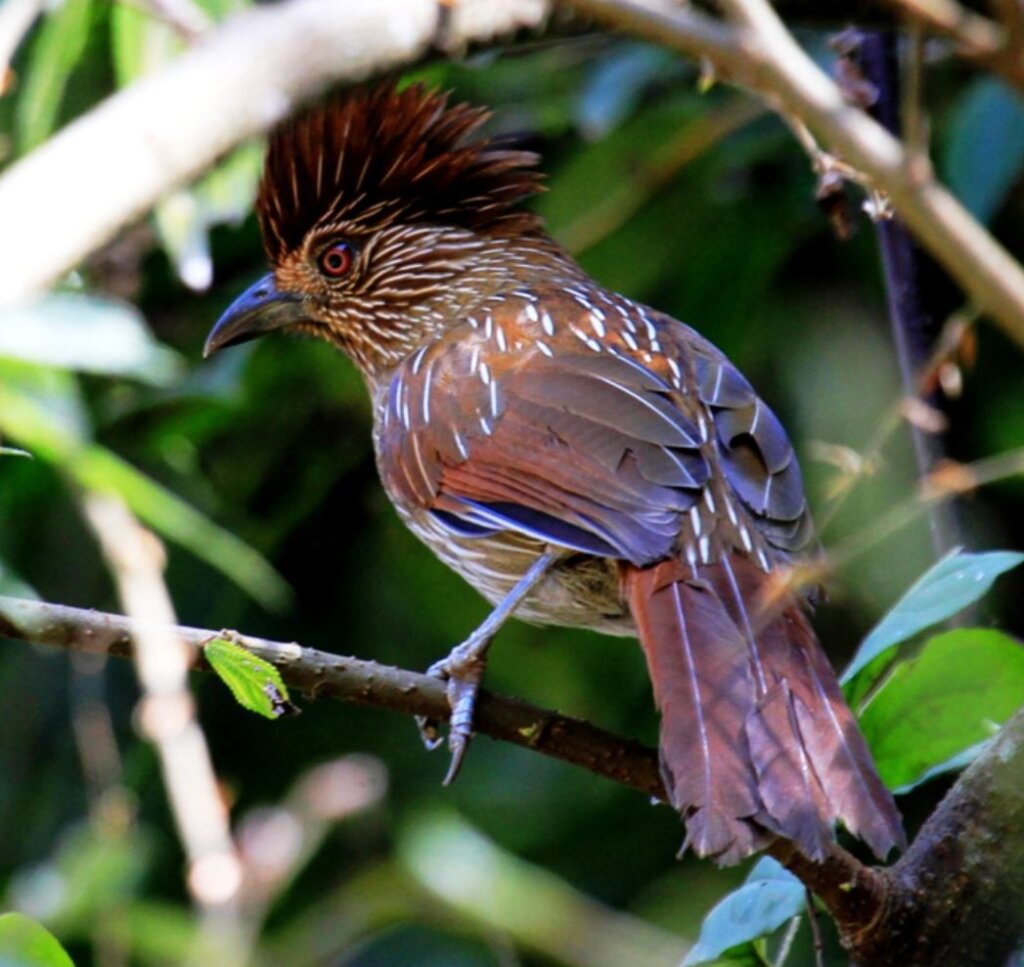
This laughingthrush, featured in a photo by Wikian01 under the CC BY-SA 4.0 license, has a distinct appearance with its short beak and fluffy head feathers. Its coloring is mostly brown with thin white stripes adorning its body. It’s often compared to a barwing, but lacks the same markings.
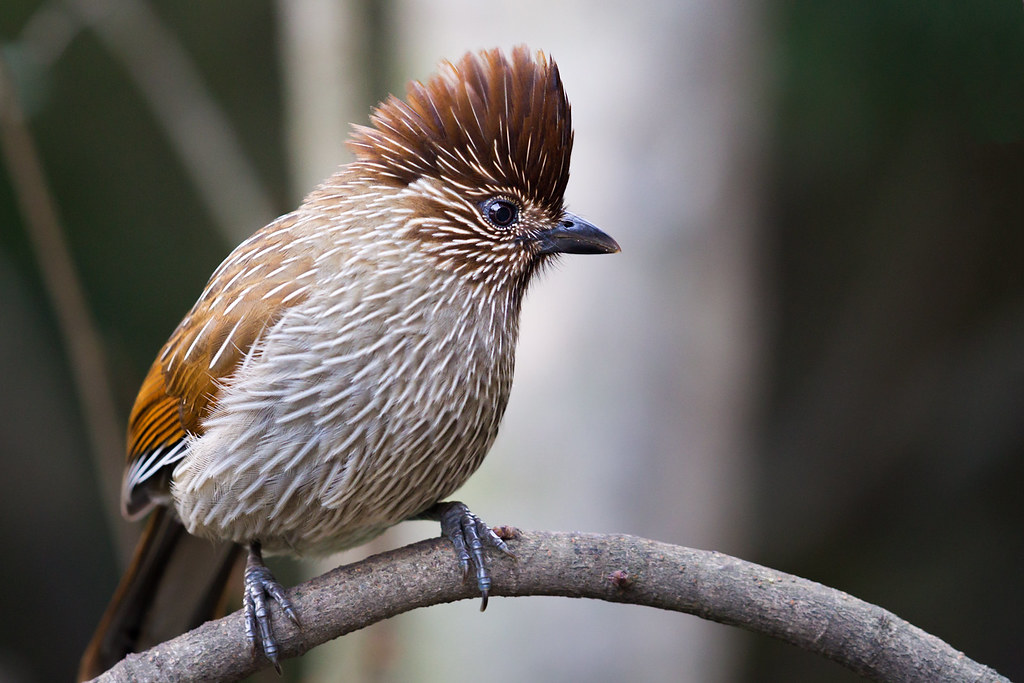
The Himalayan region is home to this particular species, which can be spotted from the Sutlej valley all the way to Bhutan, at heights of 6000 to 9000 feet. Although there have been some reports of it being seen in Birbhum, Bengal, these are most likely inaccurate.
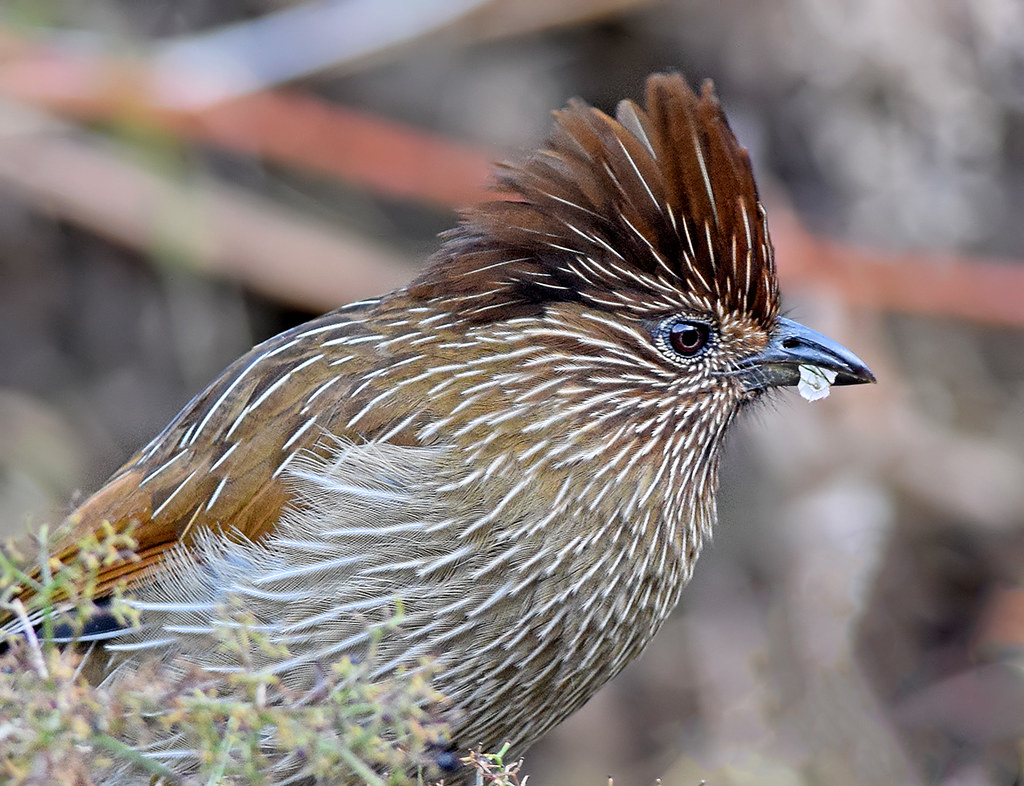
The “striated laughingthrush” photo taken by T_Monk is authorized under CC BY 2.0. This bird species can be typically found in subtropical or tropical lowland forests that are moist, as well as subtropical or tropical mountainous forests.
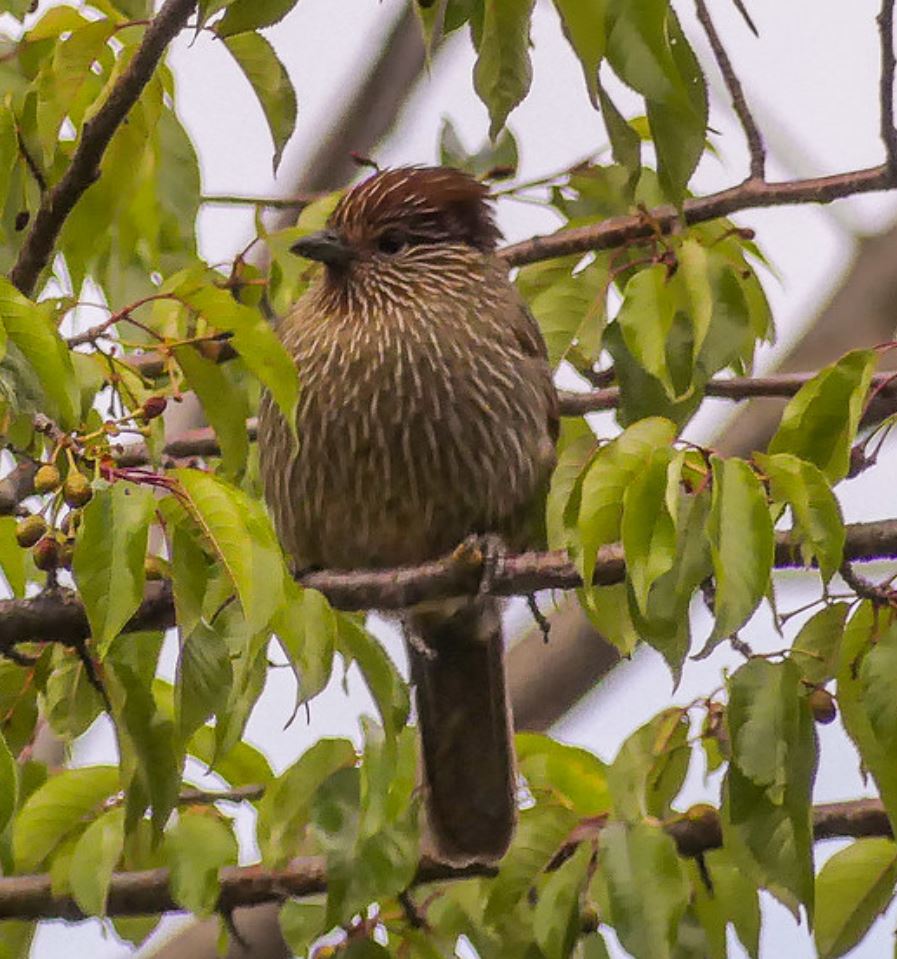
The “Striated Laughingthrush,” as captured in the photo by Mike Prince under a CC BY 2.0 license (cropped), commonly looks for its food in the middle to lower levels of its environment. It typically hunts for nourishment on the tall trees’ canopies, lower branches, and underbrush. This bird’s diet consists of various types of sustenance, such as beetles, berries, seeds, aromatic wintergreen, flowers, and rhododendron. Additionally, it enjoys eating gelatinous lichen.
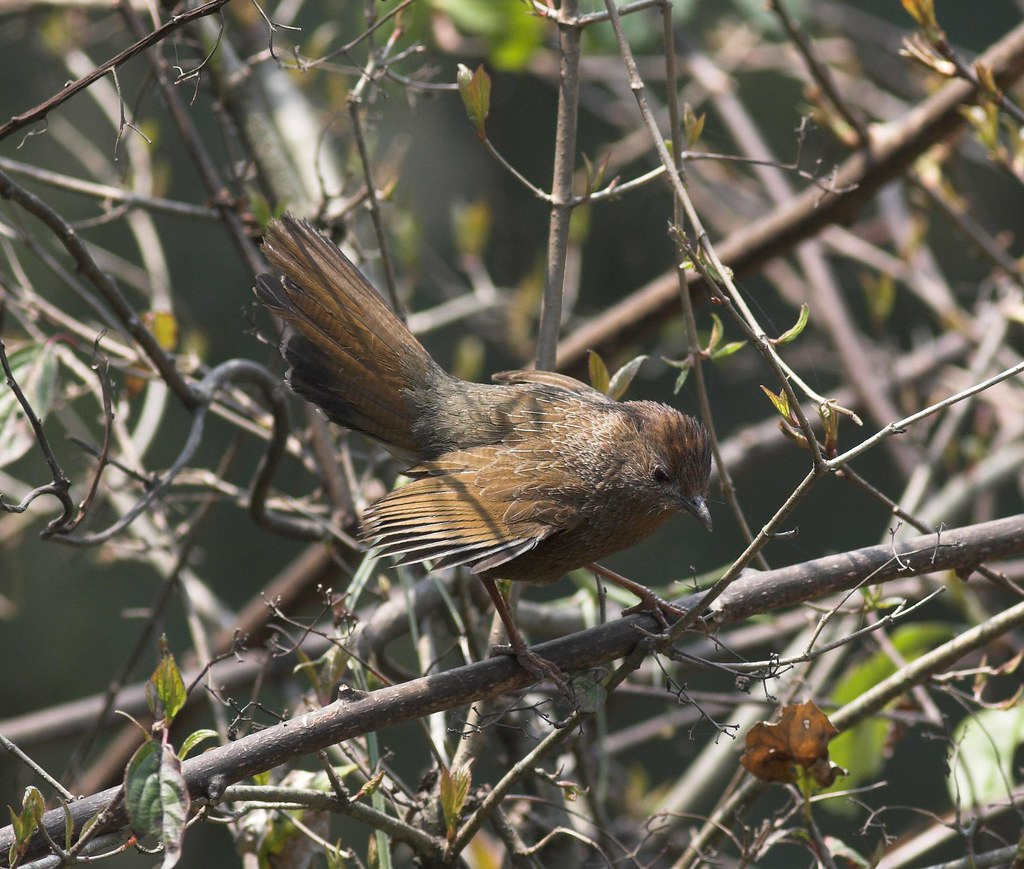
The picture titled “Striated Laughingthrush Garrulax striatus” taken by Allan Drewitt and licensed under CC BY 2.0 showcases a bird that is recognizable for its unique calls, which have been described to sound like the clucking of a hen right after laying an egg. The breeding season for this bird typically takes place between May and July, and during this time, they construct a cup-shaped nest using grass and other materials within a low tree. Interestingly, the bird appears to lay only two eggs during this period, which are blue in color. Some of the eggs are completely spotless, while others have a few brownish-red specks. The eggs measure about 1.3 by 0.9 inches in size.
